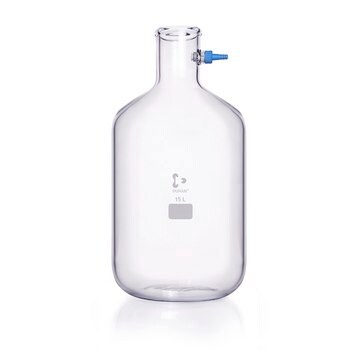おすすめの製品
蒸気密度
2.67 (vs air)
蒸気圧
5.83 psi
製品種目
ReagentPlus®
アッセイ
≥99.9%
形状
liquid
自己発火温度
212 °F
精製方法
redistillation
expl. lim.
50 %
不純物
≤0.03% (water)
≤1.5 ppm hydrogen sulfide
≤2.5 ppm sulfur dioxide
<100 ppb benzene (No single impurity > 100 ppb, measured as benzene)
<500 ppb total hydrocarbon content
色
APHA: ≤10
屈折率
n20/D 1.627 (lit.)
bp
46 °C (lit.)
mp
−112-−111 °C (lit.)
溶解性
alcohol: miscible(lit.)
benzene: miscible(lit.)
密度
1.266 g/mL at 25 °C (lit.)
SMILES記法
S=C=S
InChI
1S/CS2/c2-1-3
InChI Key
QGJOPFRUJISHPQ-UHFFFAOYSA-N
類似した製品をお探しですか? 訪問 製品比較ガイド
詳細
アプリケーション
法的情報
シグナルワード
Danger
危険有害性の分類
Acute Tox. 4 Inhalation - Eye Irrit. 2 - Flam. Liq. 2 - Repr. 2 - Skin Irrit. 2 - STOT RE 1
ターゲットの組織
Peripheral nervous system,Central nervous system,Cardio-vascular system,Eyes
保管分類コード
3 - Flammable liquids
WGK
WGK 2
引火点(°F)
-22.0 °F - closed cup
引火点(℃)
-30 °C - closed cup
適用法令
試験研究用途を考慮した関連法令を主に挙げております。化学物質以外については、一部の情報のみ提供しています。 製品を安全かつ合法的に使用することは、使用者の義務です。最新情報により修正される場合があります。WEBの反映には時間を要することがあるため、適宜SDSをご参照ください。
PRTR
第一種指定化学物質
消防法
第4類:引火性液体
特殊引火物
危険等級I
労働安全衛生法名称等を表示すべき危険物及び有害物
名称等を表示すべき危険物及び有害物
労働安全衛生法名称等を通知すべき危険物及び有害物
名称等を通知すべき危険物及び有害物
Jan Code
424641-VAR:
424641-500ML:4548173264974
424641-BULK:
424641-100ML:4548173148694
試験成績書(COA)
製品のロット番号・バッチ番号を入力して、試験成績書(COA) を検索できます。ロット番号・バッチ番号は、製品ラベルに「Lot」または「Batch」に続いて記載されています。
ライフサイエンス、有機合成、材料科学、クロマトグラフィー、分析など、あらゆる分野の研究に経験のあるメンバーがおります。.
製品に関するお問い合わせはこちら(テクニカルサービス)







